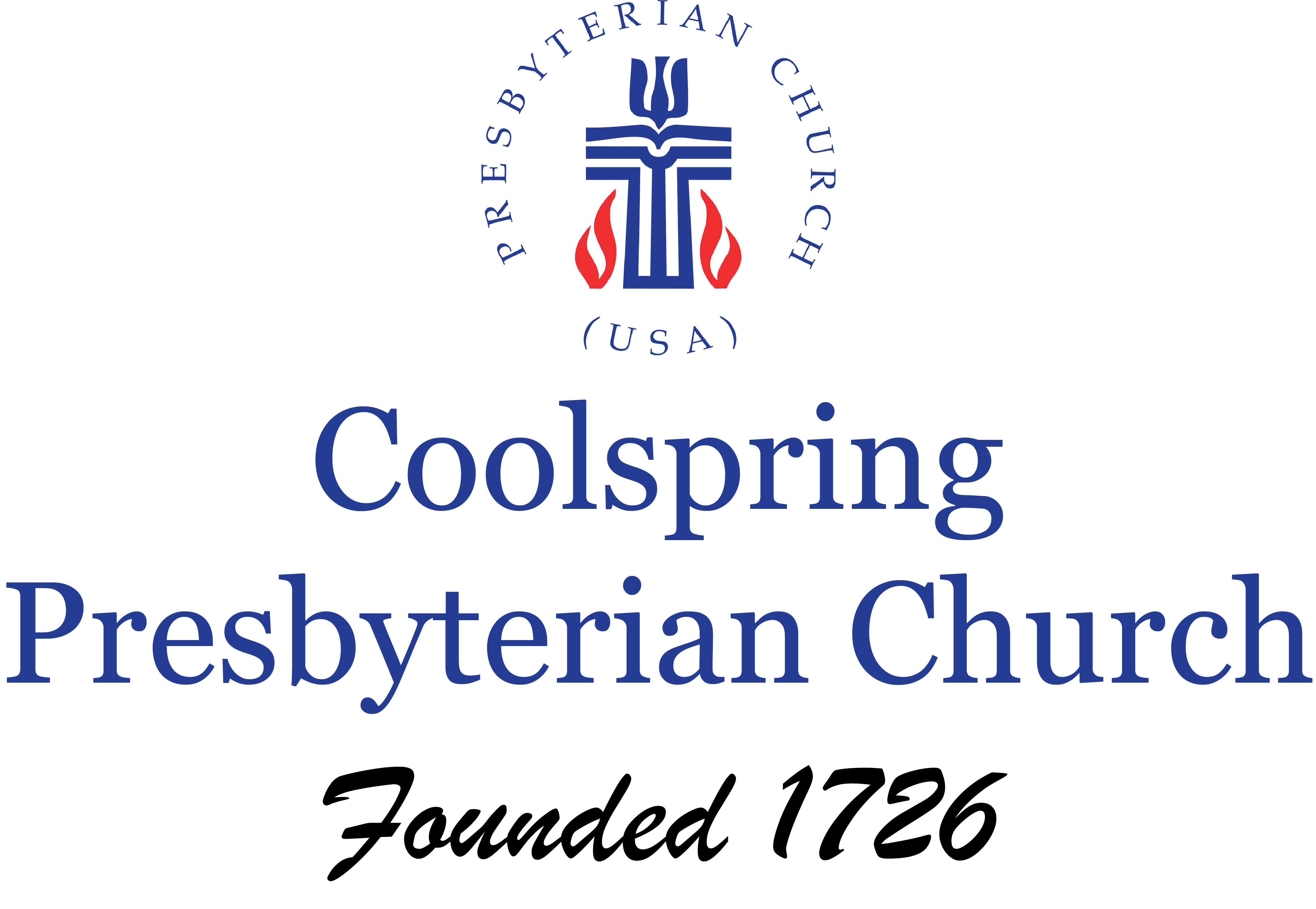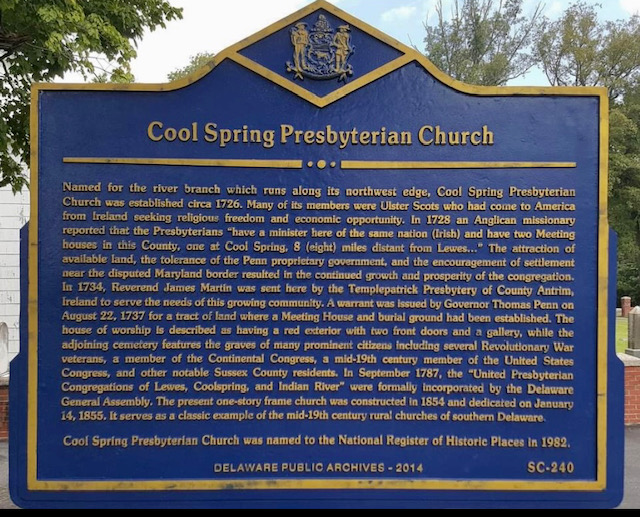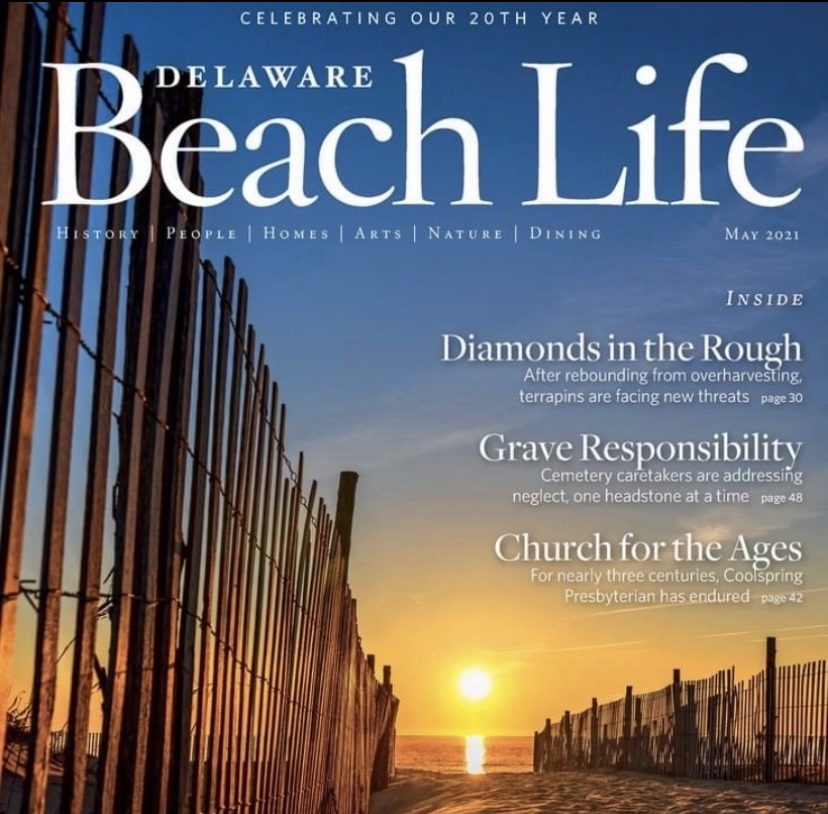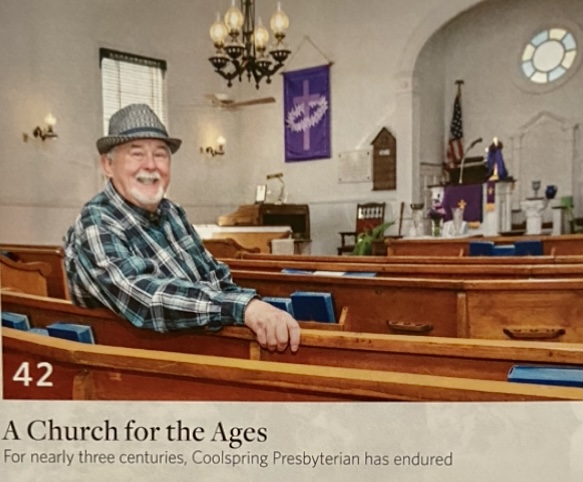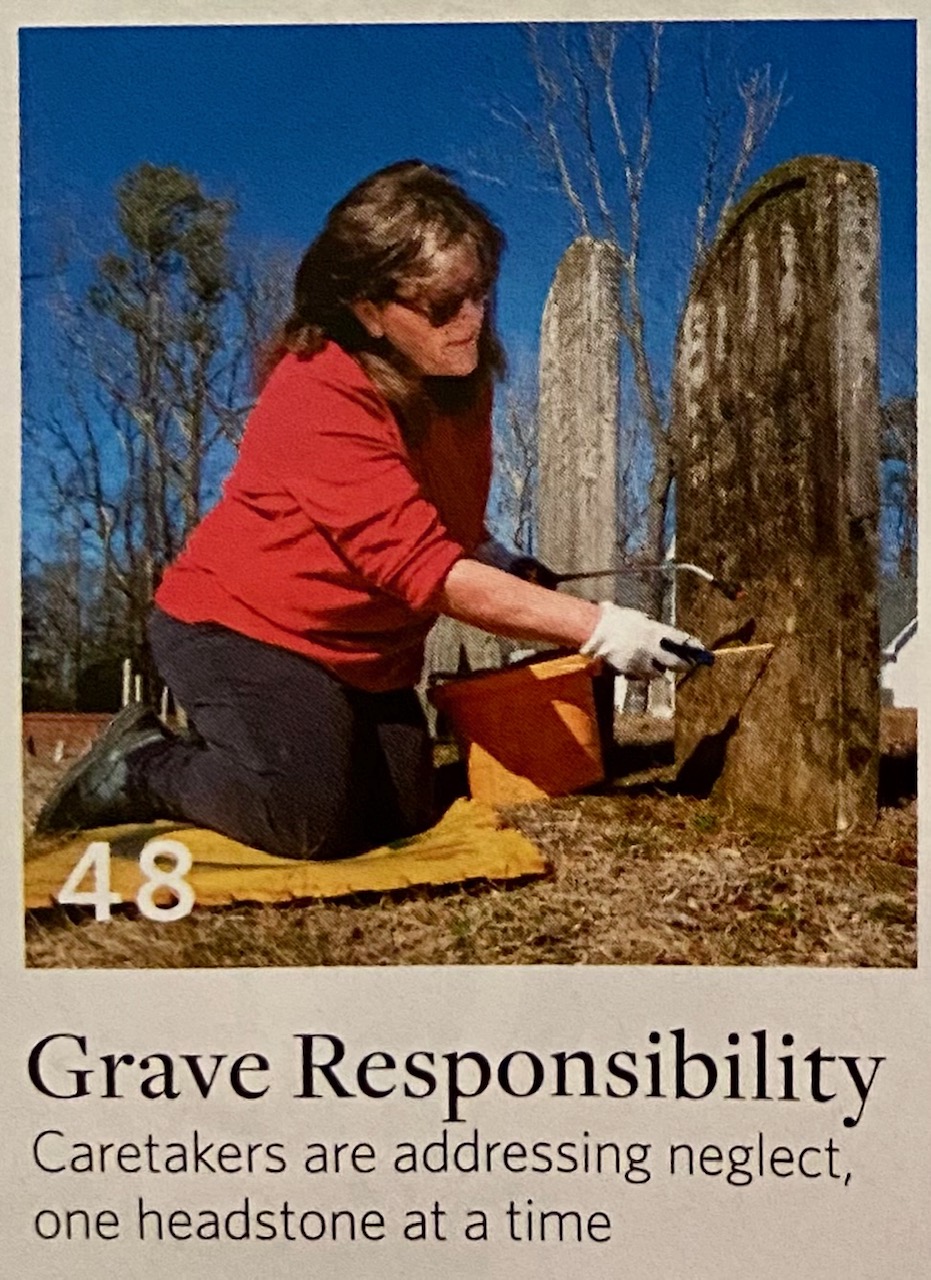The History of Coolspring Presbyterian Church
We are all so proud of the Coolspring Church’s history and its colonial beginnings. On the opening home webpage are two pictures. The older black and white photo on the left, dates around the 200th anniversary of the church, 1926. Dr. David M. Hitch. DDS (1866-1947) an elder of the church, stands in front alongside his car. The color photo on the right is of the Meetinghouse today.
The founding year of the colonial church is believed to be 1726. Earliest church records are missing, however, the Rev. William Becket, Rector of St. Peter’s Church, Lewes in a letter dated July 1728, stated that the Presbyterians had two churches in Sussex County, one at Lewes and one at Coolspring. The estimated population in Sussex County in 1726 was 1,750 people, divided among the religious denominations as follows: 1,075 Episcopalians, 600 Presbyterians, and 65 Quakers. Sussex County then was little more than half the area it now represents. Lewes had fifty-eight families.
The pastor of the Lewes Presbyterian Church, the Rev. John Thomson/Thompson served 1717-1729, is credited with the establishment of Coolspring Church. He arrived in Lewes from Ireland in 1715. The first Coolspring Church building is presumed to have been constructed of roughly hewn logs. The second church building, circa 1735, was a red-painted frame structure that was situated long-wise with separate doors facing the road.
Records of the General Synod of Ulster, Vol. 11, p. 189, dated June 18,1734 show that Mr. James Martin was ordained in May 1734 at Temple Patrick Presbytery in Londonderry for the "Ministry in the Plantations of America." He purchased land in the Coolspring area known as White Meadow Farm on February 1,1736 and served Coolspring and the Lewes Brick Church until his death in April 1743. Descendants of his cousins Josias and James actively continued in the church well into the present century.
The land on which Coolspring Church stands was granted to the Rev. James Martin and several members on August 22,1737 by Thomas Penn, son of William Penn, founder of the Province of Pennsylvania. At that time it was illegal for “Churches, in their own right” to hold any property.
The present church building dates to 1854 and is considered a fine example of simple Greek Revival architecture as interpreted by rural Sussex County.
The old churchyard contains graves of veterans of the French and Indian war, the War of 1812, the Civil War, and the Revolutionary War, as well as WWI, WWII, Korean War, and Vietnam. Notables include William Peery, a member of the Continental Congress and the Delaware Militia during the Revolutionary War, also serving in the Delaware State House of Representatives, and leaders of Sussex County, immigrant Scotsmen who founded the Church, and their descendants, are interred in the Coolspring Historic Cemetery.
